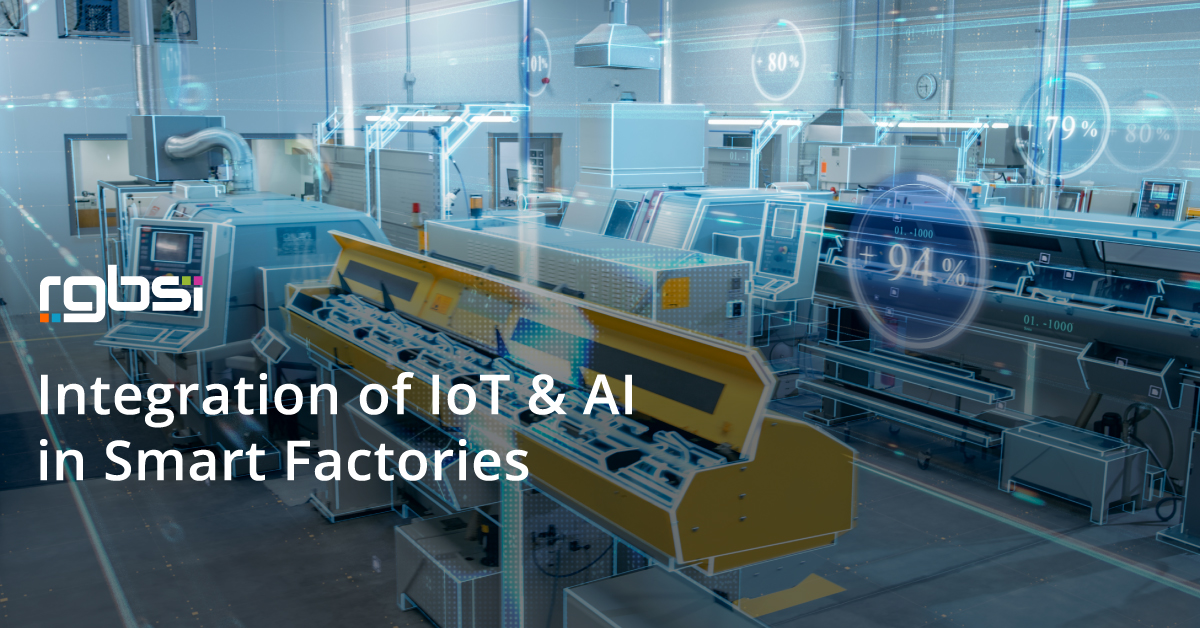
The industrial sector is on the verge of another transformation, thanks to the Internet of Things (IoT) and Artificial Intelligence (AI) applications.
Manufacturing processes have been steadily optimized by new technological developments ever since the beginning of the industrial revolution. With the arrival of Industry 4.0 and the widespread acceptance of this paradigm shift, the concept of "smart factories" is increasingly gaining traction.
This article will explore the growing interest in smart factories, particularly with the integration of IoT and AI.
What is a Smart Factory?
The smart factory uses cutting-edge IoT technologies like artificial intelligence (AI) and machine learning (ML) to analyze data, perform automated operations, and learn as it goes. It is a system in which various machines, channels of communication, and computational resources are all linked together.
Benefits of Smart Factory Technology
Supply chain managers need solutions that can give a measurable and significant value - and bring it swiftly - as customer expectations and economic uncertainties reach new heights. Thus, there are substantial economic gains for businesses that invest in digital transformation and smart factory solutions, including:
- Efficiency and Productivity - The manufacturing industry has traditionally been quite reactionary, looking back at an event or trend that has already occurred and then seeking to change course based on that. Smart manufacturing technologies aim to lessen the necessity for reactive methods by driving efficiency and productivity in their processes to make supply chain management more resilient and responsive.
- Security and Sustainability - Many shoppers get prepared to pay a premium for sustainable products that are socially and environmentally responsible from sourcing through manufacturing. Emerging smart factory technologies make it less challenging for companies to adopt safer, greener, and more socially conscious procedures.
- High Quality of Service and Product - Traditionally, manufacturers had difficulty guaranteeing that their instructions were understood and carried out by the suppliers and manufacturers at the bottom of their supply chains. To overcome this, connectivity to the cloud and full visibility across the whole production process are hallmarks of the smart factory, allowing instantaneous analysis and guidance at every production stage.
5 Use Cases of IoT and AI Technologies in Smart Factories
There is a seemingly endless list of possible use cases for industry 4.0 in a smart factory, but here are 5 common uses.
1. Digital Quality Control
With digital quality control, It is simpler to digitally track manufacturing batches of data like temperature and pressure when machinery is connected to cloud systems. This technique, apart of Quality 4.0, can drastically lessen the number of subpar products that reach consumers and the necessity of expensive recalls.
2. Factory Monitoring
With factory monitoring, organizations may eliminate manufacturing bottlenecks, monitor, and maximize crucial KPIs, and stay ahead of the curve to quicken their distribution and delivery routes by applying AI and IoT systems in their smart factory.
3. Predictive Maintenance
There is a rising need to keep tabs on autonomous machines and predictive maintenance needs before failure and downtime as factories incorporate more of them into daily operations.
Through sensors and network access, machines can gather and analyze data to anticipate the occurrence of a problem. Cloud-based analytics and real-time data can assist engineers and maintenance staff in identifying inefficiencies in machinery and replacing parts before they fail.
4. Rapid Prototyping
Before beginning full production, firms can make smarter choices by obtaining data from smart sensors on the manufacturing floor. You can use products with sensors in the field to collect data in situational contexts. Real-time data collection can assist engineers in making rapid prototyping and quick modifications for a more effective product.
5. Smart Warehousing
It has always been difficult to keep track of inventory in a warehouse and find an effective approach to stock and pick items. With smart warehousing, IoT and AI systems provide real-time position, quantity, and temperature data from sensors in a smart factory. Without any human intervention, autonomous robots can complete the order fulfillment process.
Conclusion
The marriage of IoT and AI, also known as "smart technology," is what will power future factories.
In the end, connecting factory assets, processes, and people via an AI platform and the IoT allows realization of the smart factory vision, where production is adaptive, responsive, and resilient.
About RGBSI
At RGBSI, we deliver total workforce management, engineering, quality lifecycle management, and IT solutions that provide strategic partnership for organizations of all sizes.
Advanced Manufacturing Services
We help you implement system modernization and seamless processing from design through quality acceptance and overhaul with advanced manufacturing services.
- CAM Services: CNC & CMM Programing
- Collaborating Manufacturing & Testing
- RFID Integration/Asset Tracking
- Digital Factories & Layout Design
- Additive Manufacturing
Learn more about our engineering services.











